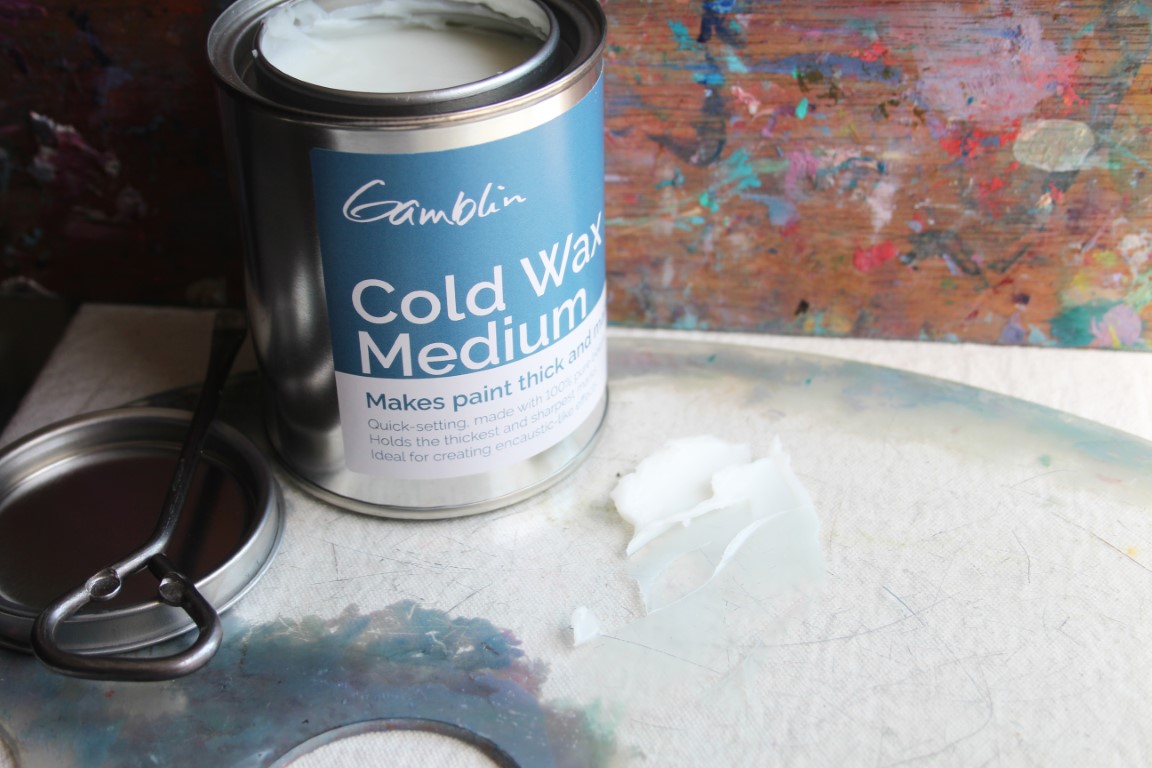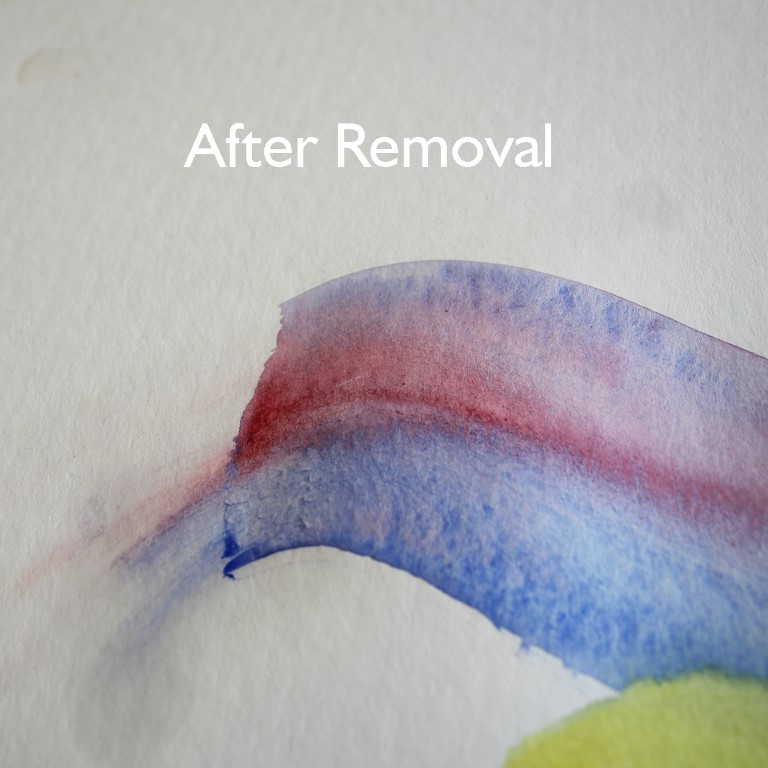
How to use Cold Wax for Varnishing
While Gamvar is the easiest way to make your painting look better™ Cold Wax is an alternative varnish that is versatile and growing increasingly popular for a variety of different types of artwork. In addition to exploring new ways to create art, there is joy in experimenting with new ways to finish and protect your painting. Cold Wax is an excellent option for those looking to try something new.
Cold Wax is primarily used for Cold Wax Painting as a medium for oil painting, or as a modifier to reduce the gloss of oil mediums. Cold Wax also works beautifully as a final finish for your completed work, creating a unified, soft, subtle and velvety appearance. Read-on for more inspiration and information on Cold Wax as varnish and techniques to support your artistic intention.
Why use wax?
Why would I use Cold Wax as a varnish?
Cold Wax as varnish is archival, non-yellowing, and helps unify an artwork surface, just like Gamvar. Cold Wax provides a more subdued appearance to artwork. This is helpful to eliminate unwanted gloss or high shine. This application softens edges and makes the work easier to view under strong light or for the purpose of photographing and documentation. Cold Wax varnish will dry to a matte or satin finish, depending on how you apply the wax.

Does Cold Wax Varnish offer UV protection? Answer: No - click for more information
Cold Wax when used as a varnish does not protect against UV light exposure and does not contain Ultraviolet Light Filters and Stabilizers (UVLS) for protection against the harmful effects of ultraviolet radiation.
If one paints with lightfast colors (oil, acrylic, or watercolor) UV light should be of no concern.
Colors with an ASTM Lightfastness rating of I or II do not require further protection from UV light. A highly lightfast color does not fade with age, even when exposed to constant sunlight. Only one Gamblin oil color, Alizarin Crimson, has a Lightfastness III rating (Fair) which has potential to fade. We offer a lightfast alternative, Alizarin Crimson Permanent (rated I, Excellent).
What types of artwork?
What different types of art can I use Cold Wax varnish on?
Cold Wax varnish works beautifully on traditional oil paintings, alkyd oil paintings, water mixable oil paintings, acrylic paintings, and Cold Wax paintings. Cold Wax can also be used to finish encaustic and mixed media collages.
When a painting contains a high percentage of wax in mixture with oil color the layers may dissolve or be removed by a varnish like Gamvar. For these scenarios, Cold Wax varnish is our suggestion for a safer option that won’t harm the painting. Cold Wax as a varnish is also ideal for paintings that incorporate the use of oil bars, as oil bars can contain a high wax content.
Cold Wax can also be used as a varnish on Giclee prints.
It’s also a great choice for varnishing 3D artwork and sculptures, such as ceramic, plaster or wood. Unlike fluid varnishes, Cold Wax doesn’t drip, is easy to control with a cloth for application and can still conform to the physical contours of your work.
Please see information in the next toggle regarding use of Cold Wax with WATERCOLOR AND GOUACHE
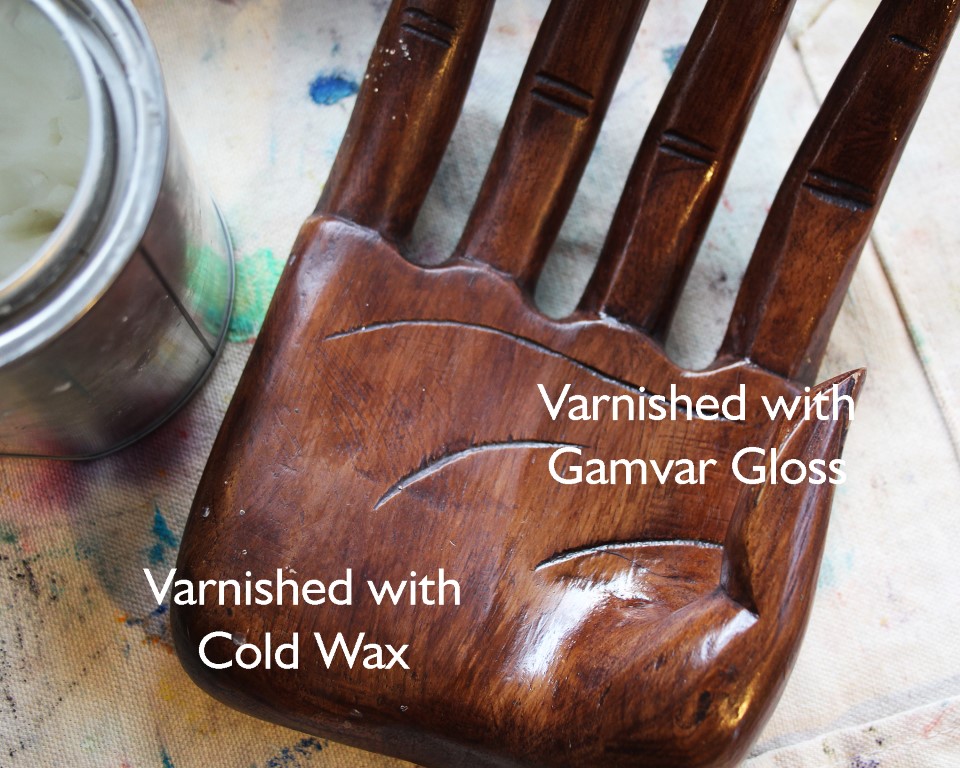
Watercolor? Gouache?
Can Cold Wax be used for varnishing or sealing watercolor? Gouache?
Watercolor and gouache artists have reported using this technique with good success. However, we want to emphasize a disclaimer that once Cold Wax is applied to watercolor or gouache, attempting removal of the varnish with Gamsol has shown paint smearing or removal of pigment. Consider the use of wax varnish on these mediums to be non-removable.
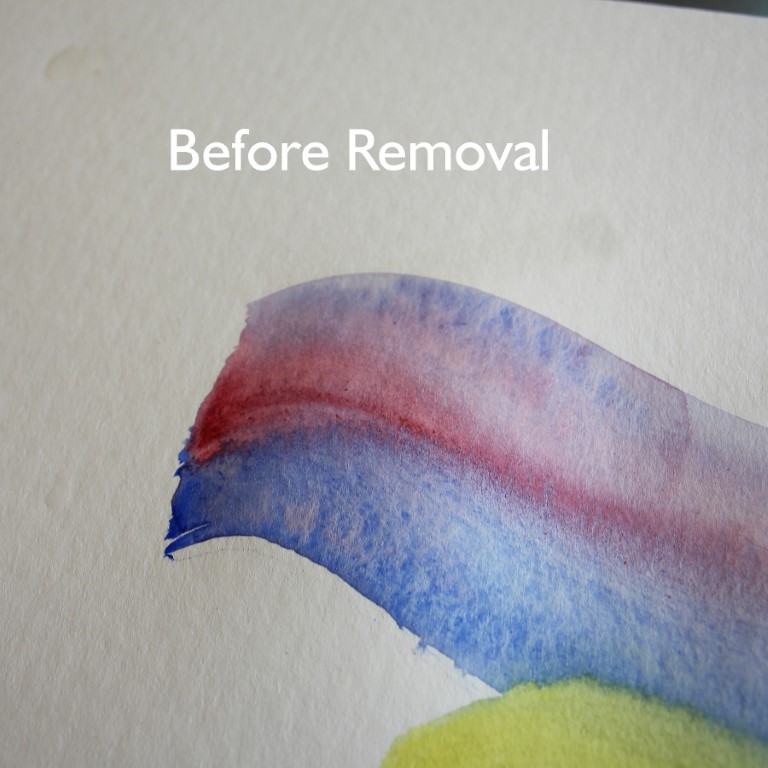
We have observed how Gamsol has the potential to be absorbed into colored papers and this may cause a color shift in the papers appearance. This was seen when applying Cold Wax to paper maps, as an example.
Cold Wax varnish does not provide the same level of protection from environmental damage as glass framing. The benefit is the matte appearance Cold Wax offers watercolor or gouache paintings versus glass framing.
Having said this, we do not want to dissuade artists from experimenting with new ways to finish their work. We would encourage any artist using Cold Wax on watercolor or gouache to test the combination on an unimportant surface beforehand to ensure confidence that this technique achieves the desired result.
Application?
How should you apply Cold Wax as a varnish?
Ensure your painting is dry to the touch and firm throughout. For an oil painting, this is 2-3 weeks on average. Thicker and more textured paintings may require more time. To check if it’s dry, gently press your nail into the thickest part of your painting.
The key to this technique is thin application. Gently warm the wax first by placing the closed container in the sun or in a pan of hot tap water. You’re softening the wax without melting it, making the wax easier to spread over a broad area. Stiff or cold wax is difficult to spread. Cold Wax straight from the can at room temperature won’t get you the thin, even application you’re looking for.
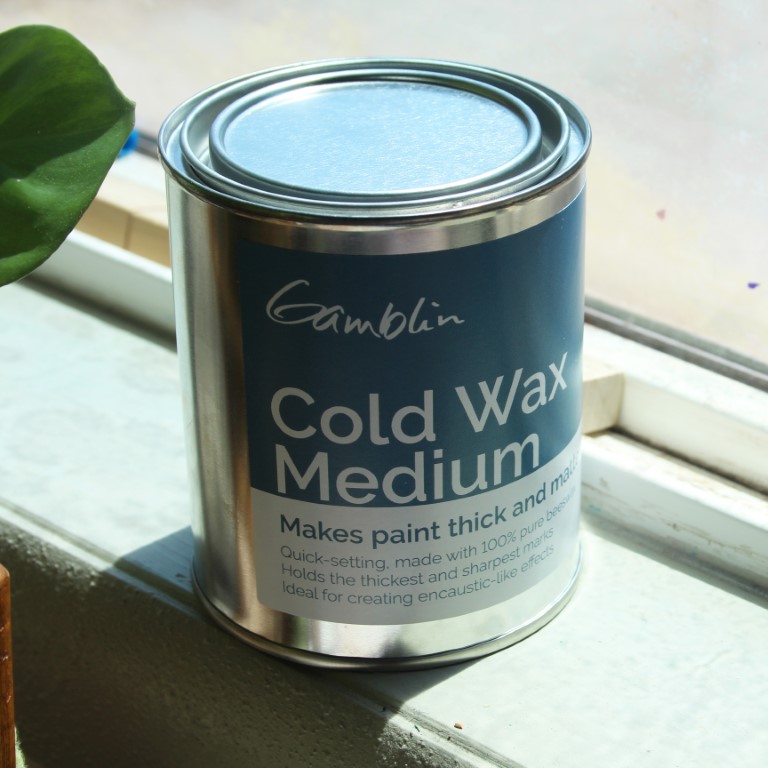

Pat a small amount of wax onto a soft, lint-free cotton cloth and rub it thinly over the painting using small circular motions. Avoid scooping a large dollop of wax on the cloth. Gently buff the wax onto your painting surface with a gentle circular motion.

For a satin finish, allow the wax to dry for 4 – 6 hours and then buff the surface gently with another soft cloth. Old cotton or microfiber rags work great.
For a matte appearance, rub on the wax and allow it to dry completely for 48 hours and do not buff.
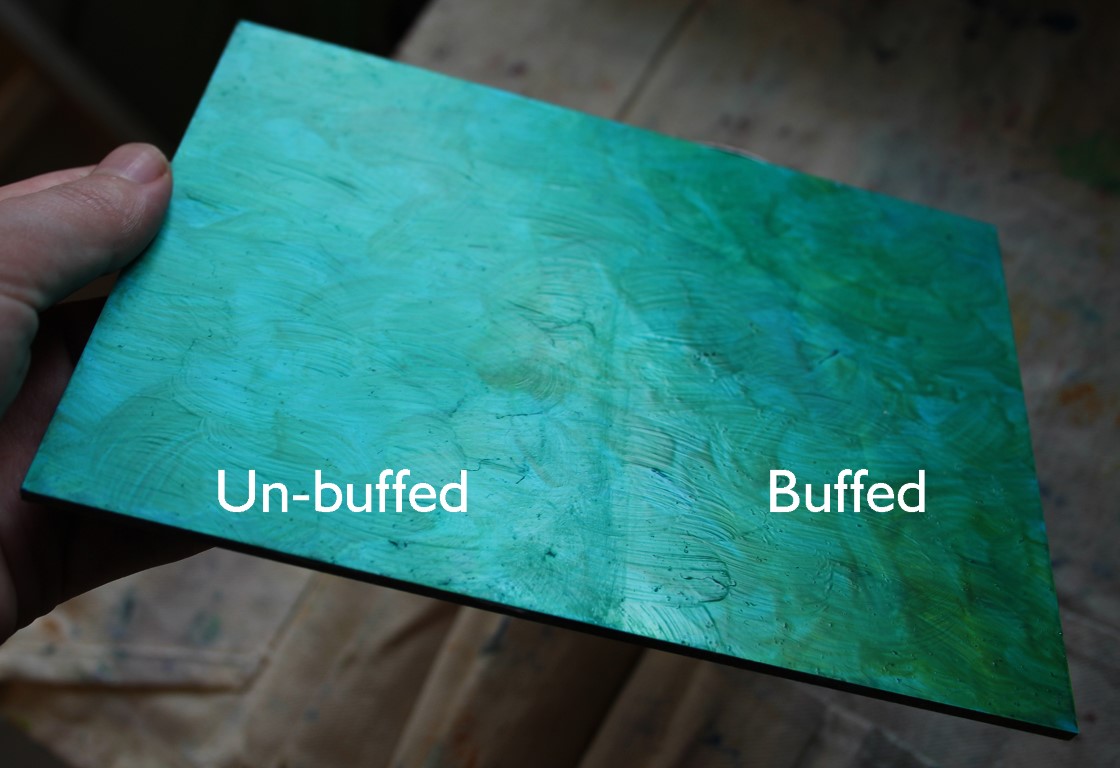
Removal?
What if I don’t like it, can I take Cold Wax off?
Yes. Absolutely. A thin layer of Cold Wax applied as a varnish can be easily and safely removed off an oil or acrylic painting with Gamsol. If your painting has a lot of texture, this will take some extra effort.
We want to emphasize a disclaimer that once Cold Wax is applied to watercolor or gouache artworks, consider this to be non-removable. Please see more information in the watercolor and gouache section below.
Removal Directions:
- Take a clean lint-free cotton cloth and wet it with Gamsol
- Using circular strokes, dissolve a small area of the wax at a time
- Immediately wipe away the dissolved wax with another dry cotton cloth
- Unfold and refold the wiping cloth several times during the process to make sure you are using an absorbent part of the cloth. Usually, there is enough of a difference in surface sheen to tell where wax has been removed. If it is difficult to tell, approach the surface systematically in small areas at a time
- Repeat until the wax is removed from the desired areas or the entire artwork
- A final wipe down with a fresh cloth and Gamsol may help to ensure any residual wax is completely removed
- Allow Gamsol to evaporate away before continuing to add new paint layers or re-varnishing the art
What about texture?
Can Cold Wax be used as a finish on textured artwork?
Gently warming Cold Wax can help make it soft enough for application to a textured painting. However if a painting has major texture you may find it difficult applying the wax evenly into all the nooks and crannies. For this reason a brush on or spray varnish may be a more appropriate choice for extremely textured artwork.

Below is an example of a painting with too much texture, which may be difficult to apply Cold Wax as a varnish to.
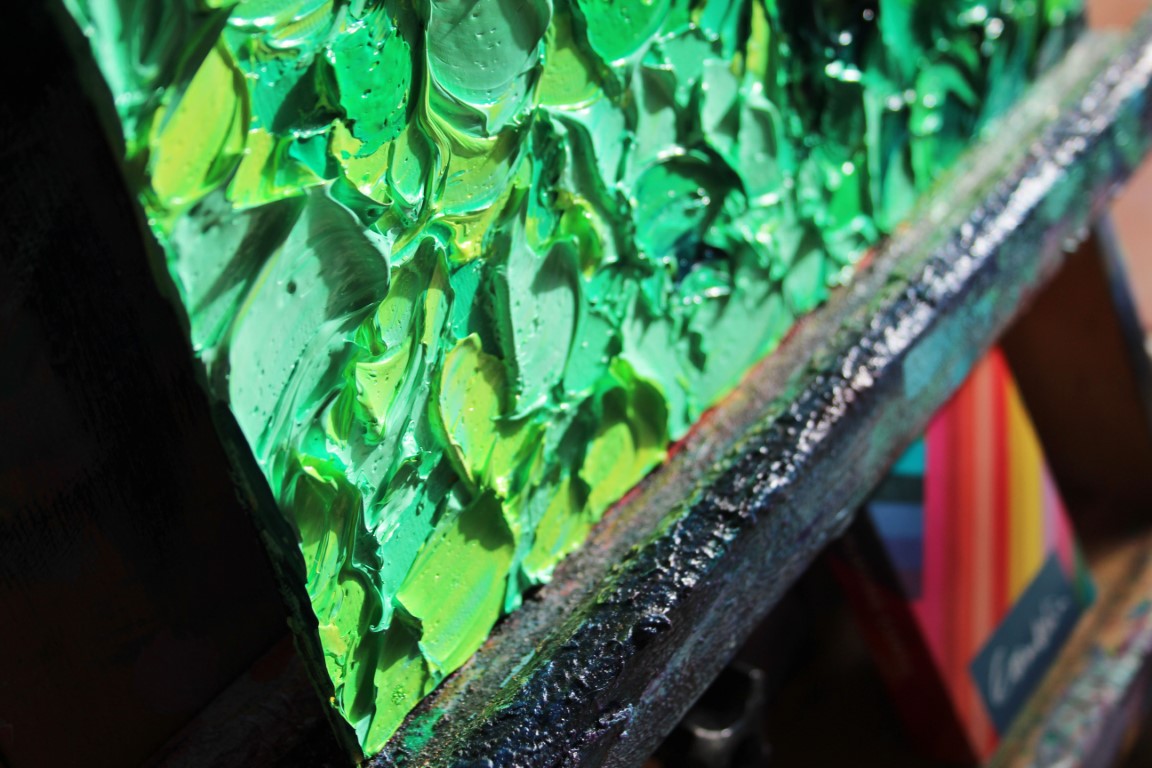
How is it different?
What makes Cold Wax varnish different from using Gamvar?
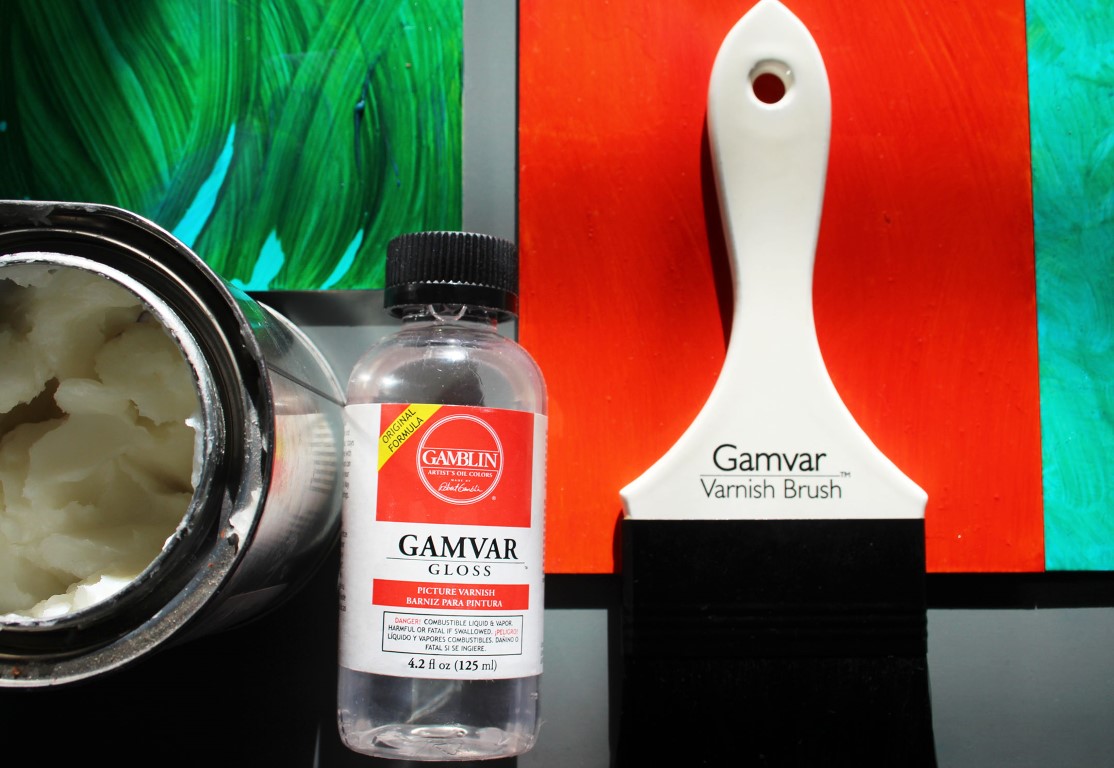
Cold Wax is a simple mixture of lightly bleached beeswax, Gamsol and a small amount of alkyd resin. As Gamsol evaporates out, the wax hardens to the density of a beeswax candle. Applied in a thin layer, Cold Wax provides a flat, matte finish to your artwork.
Cold Wax as varnish does not provide the same level of surface protection as Gamvar.
Please see our “Why Varnish” article that addresses the benefits of Gamvar.
The use of Cold Wax as a varnish will not saturate color depth in the same way as Gamvar. For maximum protection and color saturation in addition to the finish of Cold Wax, consider the use of both varnishes together. If this is your intention, apply a thin layer of Gamvar Gloss first and allow this to dry for 24 hours before applying a thin layer of wax varnish over the Gamvar.
Cold Wax alone will provide a more muted, desaturated and flat appearance, similar to a soft pastel artwork without the same level of surface protection as you get with Gamvar.
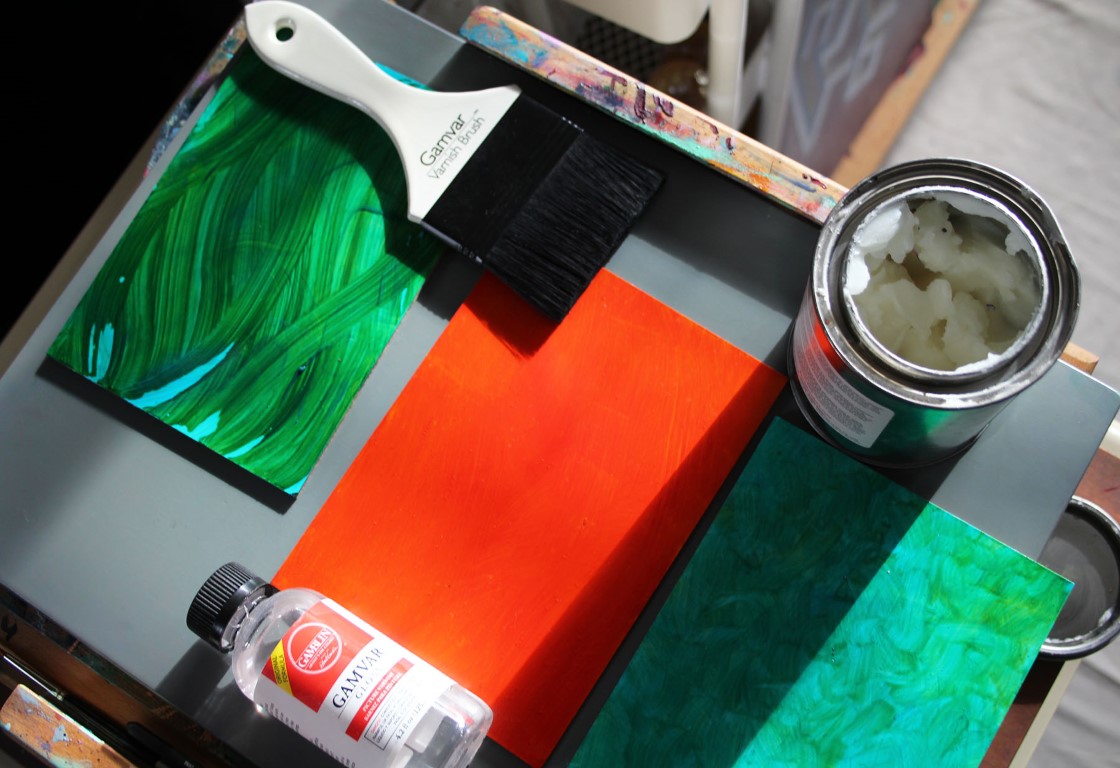
Other Frequently Asked Questions
How long does Cold Wax varnish take to dry?
Allow your artwork 48 hours to dry before framing or transport. This is the longest it takes for the wax varnish to completely dry. Good airflow in your space will help speed dry time.
Is Cold Wax used as varnish susceptible to melting?
When used as a varnish Cold Wax is not going to melt off your artwork. Dried Cold Wax alone has a melting point of 144 degrees F. At 90F, the wax will soften but will not melt. 144F is far warmer than an interior room would ever get- even in the heat of summer. By comparison, a car with windows rolled up on a 90F day over 90 minutes can reach 138F, so beware of storing artwork varnished with wax in a hot vehicle.
Can you add new paint layers over a dry layer of Cold Wax varnish?
Just like Gamvar, Cold Wax as varnish should be removed before adding additional layers of paint. The added paint layers may have difficulty adhering to the layer of wax varnish. Wax varnish layers between paint layers remain soluble and those paint layers would run the risk of removal with future cleaning or cleaning and re-varnishing of your work.
